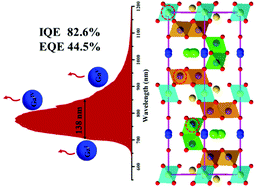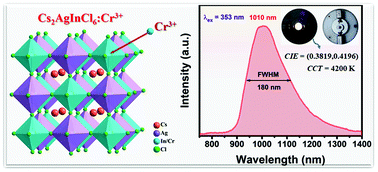April 2021, Journal of the American Ceramic Society.https://doi.org/10.1111/jace.17856
 \
\
Broadband near-infrared phosphors are essential to realize nondestructive analysis in food industry and biomedical areas. Efficient long-wavelength (>830 nm) phosphors are strongly desired for practical applications. Herein, we demonstrate an efficient broadband NIR phosphor LiInGe2O6:Cr3+, which exhibits a broad NIR emission peaking at ~880 nm with a full width at half maximum of 172 nm upon 460 nm excitation. The internal/external quantum efficiencies of LiInGe2O6:Cr3+ are measured to be 81.2% and 39.8%, respectively. The absorption of the phosphor matches well with commercial blue LEDs. Using the fabricated phosphor converted LED illuminating human palm, distribution of blood vessels can be clearly recognized under a NIR camera. These results indicate that LiInGe2O6:Cr3+ is a promising candidate to be used in future non-destructive biological applications.







